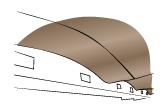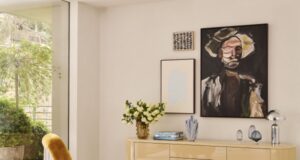
Stretch ceilings make use of stretched material (often PVC), and offer a great degree of flexibility and creative freedom in terms of design.

What is a stretch ceiling?
A stretch ceiling is similar to a dropped ceiling, in that it sits below the structural ceiling of a room. A stretch ceiling typically consists of a piece of polyvinyl chloride (PVC) material ‘stretched’ across an area, and held in place by a frame called a ‘perimeter profile’. The perimeter profile can be curved and shaped as required, and the PVC can be coloured or painted to suit just about any taste. As a result, stretched ceilings offer a great deal of of freedom in terms of shape, colour and lighting.
Why install a stretch ceiling?
A stretch ceiling has the same advantages as a dropped ceiling. It can disguise the poor condition of an existing ceiling, conceal wires, pipes or ducting. Stretch ceilings are often installed in home theatre or music rooms to soundproof them or improve their acoustics. Stretch ceilings can also be installed more quickly than many other ceiling finishes.
What is a stretch ceiling made of?
Most stretch ceilings are made of a non-flammable PVC membrane which is attached to aluminium railings (also known as ‘perimeter profiles’). The PVC can be finished with high or low gloss paint, or printed/painted with images or patterns. For this reason, stretched ceilings are popular in shops and displays. The PVC membrane is composed of numerous sheets joined together – it’s a good idea to check the quality of the joins before purchasing a particular product.
How is a stretch ceiling installed?
To install a stretch ceiling, tracks are fixed to the interior perimeter of the room. The PVC sheets are then attached to the tracks and tightened using heat.
How do stretch ceilings compare to dropped ceilings?
A stretch ceiling has all of the benefit of a dropped ceiling. It can be installed to resemble a flat ceiling or it can be manipulated into domes, arches and organic 3D shapes that could not be achieved using the dropped ceiling grid-and-tile system. The PVC can be removed for dry cleaning too.
|
Advantages
|
Disadvantages
|





